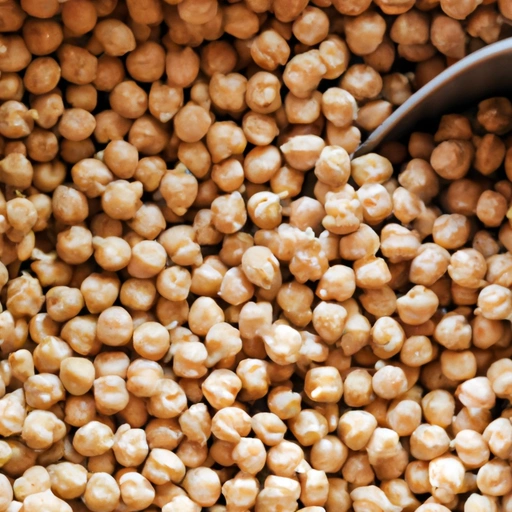Chickpea
Description

Chickpeas, also known as garbanzo beans, are a type of legume cherished for their versatility and rich nutrient profile. These small, round, beige beans are a staple ingredient in many cuisines around the world and can be used in a multitude of dishes. Chickpeas are available in various forms, including dried, canned, and as flour, making them an accessible and convenient choice for home cooks and professional chefs alike.
Common uses
Chickpeas are commonly used in a variety of dishes, including hummus, falafel, curries, stews, salads, and soups. They can also be roasted for a crunchy snack, ground into flour for gluten-free baking, or used as a meat substitute in vegan and vegetarian recipes.
Nutritional value
Calories
Chickpeas are a low-calorie food, providing approximately 269 calories per cup (164g).
Protein
With about 14.5 grams of protein per cup (164g), chickpeas are an excellent protein source, especially for plant-based diets.
Fat
Chickpeas contain a modest amount of fat, with 4.2 grams per cup (164g), most of which is polyunsaturated and monounsaturated fats.
Carbohydrates
Chickpeas are a good source of complex carbohydrates, offering about 45 grams per cup (164g).
Vitamins
They are rich in vitamins such as folate (B9), providing about 282 micrograms per cup (164g), and also contain vitamin B6, niacin (B3), thiamin (B1), and vitamin C.
Minerals
Chickpeas are packed with minerals, including manganese, providing 1.7mg per cup (164g), along with significant amounts of phosphorus, copper, iron, magnesium, potassium, and zinc.
Health benefits
Chickpeas are known for their health benefits which include aiding digestion due to their high fiber content, supporting weight management, stabilizing blood sugar levels, and being beneficial for heart health. The presence of protein and essential amino acids makes them a vital part of vegetarian and vegan diets.
Potential risks
While chickpeas are generally safe to consume, they do contain antinutrients like phytic acid, which can reduce mineral absorption, and lectins, which may cause digestive distress if consumed in large quantities or when not properly cooked.
Common recipes
Chickpeas are commonly found in recipes such as Chana Masala, Hummus, Falafel, Chickpea Salads, and Vegetarian Burgers.
Cooking methods
They can be boiled, fried, roasted, or blended, and are often soaked and cooked from their dried form or used canned for convenience.
Pairing with other ingredients
Chickpeas pair well with a variety of flavors including garlic, cumin, coriander, turmeric, parsley, tahini, onions, tomatoes, and olive oil.
Summary
Chickpeas are a nutritious and adaptable ingredient that has shaped culinary traditions around the globe. They offer an abundance of health benefits and are valued for their capacity to be included in a wide range of dishes. From savory spreads like hummus to hearty mains such as stews and curries, chickpeas continue to be a beloved staple in the kitchen.